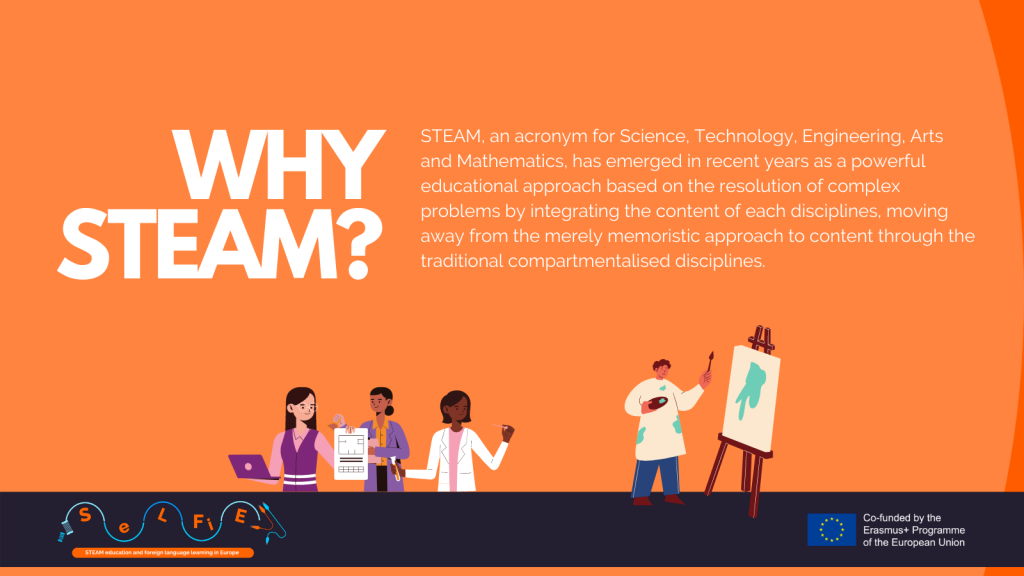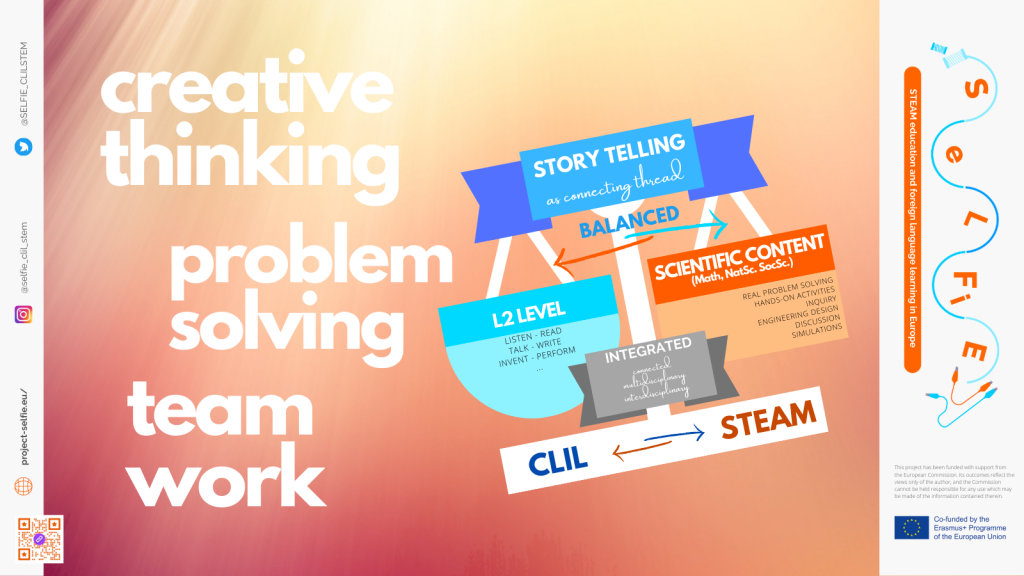STEAM, an acronym for Science, Technology, Engineering, Arts and Mathematics, has emerged in recent years as a powerful educational approach based on the resolution of complex problems by integrating the content of each disciplines, moving away from the merely memoristic approach to content through the traditional compartmentalised disciplines.

From the paradigm of interdisciplinarity, the STEAM approach has emerged as an extension of STEM (Science, Technology, Engineering and Mathematics), its predecessor approach, which was developed earlier for the same purpose, disciplinary integration. However, the inclusion of A for Arts places STEAM in a more balanced and advanced integrative position, in the sense that it not only encompasses the science fields of knowledge, but also includes Humanities. In that particular point, more recently it has been considered appropriate to consider A not only as an addiction of Arts, but also as an opportunity to include other disciplines of a humanistic nature, such as History, Psychology, Philosophy and Sociology, among others.

Both educational approaches, STEM and STEAM, represent a significant advance for integrated and contextualised learning, and they have proven their effectiveness in the integral competence development demanded at an international level. However, the increasing complexity of the problems we currently encounter, suggest that STEAM is considered a more advanced and appropriate approach, as it offers more perspectives and, therefore, more possibilities for tackling these problems.


